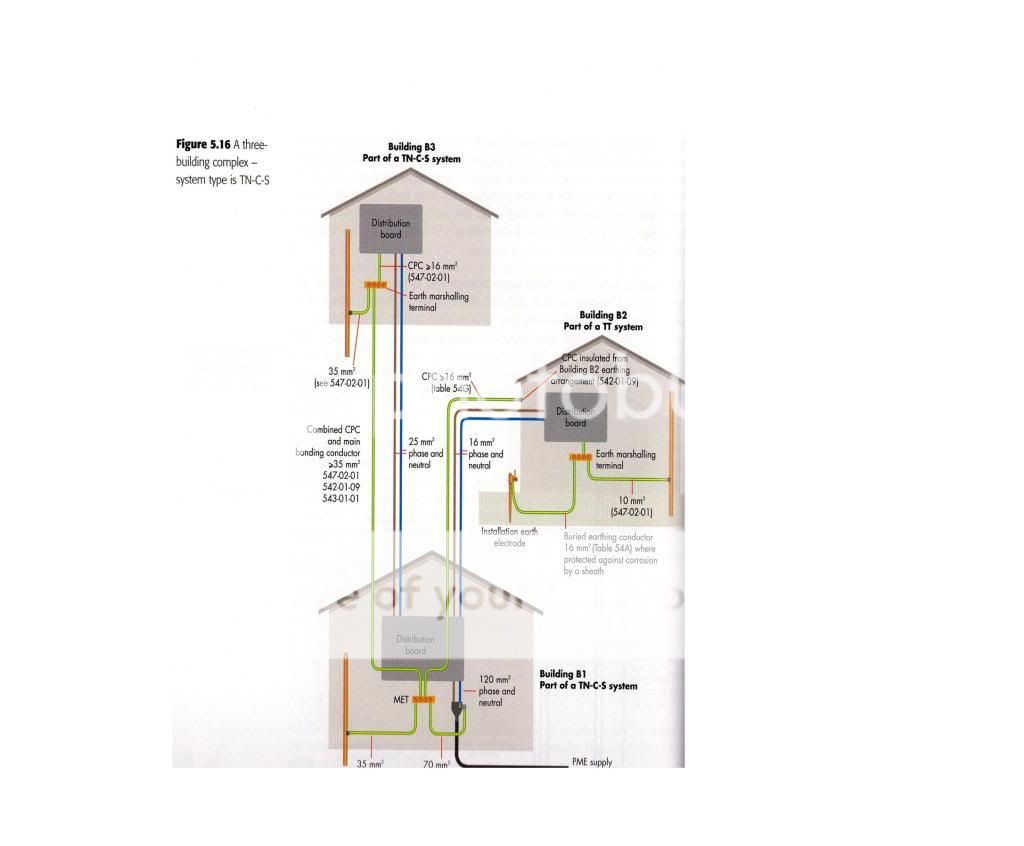I think the best way to describe it would be to give an example as each installation will have different requirements.
Lets say you want to supply a brick shed, 5 metres from the house/CU, with a lighting radial and a socket radial.
If no Extraneous Conductive Parts:
You could sellect a 4mm, two-core, SWA cable and use the armour as your CPC/Earth.
You could sellect a 4mm, three-core, SWA cable and use the third core as your CPC/Earth.
Either of these should be appropriate to feed your outbuilding, protected at the house CU by a 32A MCB.
At the outbuilding you would likely have a 30mA RCD main switch and a 6A and 20A MCB respectively.
If there were Extraneous Conductive Parts in the shed:
This changes things completely.
The installation now requires that the extraneous conductive part/s are bonded to the MET (This can be via an 'Earth Marshalling Terminal' - basically a 'remote' MET - as shown in the diagram in post 15)
The bonding of these 'Extraneous Conductive Parts' follows similar rules to the bonding carried out in the house/main installation, so the armour/third core probably wouldn't do.
You would probably be looking at minimum 10mm bonding conductor, so you either run 10mm SWA 3- Core - or you run a seperate bonding conductor alongside your SWA.
The good news is you just connect this conductor to the Earth Bar (EMT) in your garage CU, and use it as a combined CPC/Bonding.
You then run any final circuit CPCs and bonding conductors from this EMT.
That's about as good as I can explain it.
As I said earlier, each installation is different so you have to decide what is best.
E.G. If the outbuilding was 50 metres from the house, you might decide it's easier to rod it.
It's your decision at the end of the day













